Introduction
As responsible pet owners, it is important for us to provide proper care and attention to our furry friends, especially after they undergo medical procedures such as neutering. Neutering is a common procedure performed on cats to control their population and prevent various health issues. While the surgery itself is significant, post-neutering care is equally important. One aspect of this care involves ensuring that your cat wears a cone after the procedure. In this article, we will explore the reasons behind the need for a cone and discuss the right time to remove the cone after neutering your cat.
Table of Contents
Understanding why cats need a cone after neutering
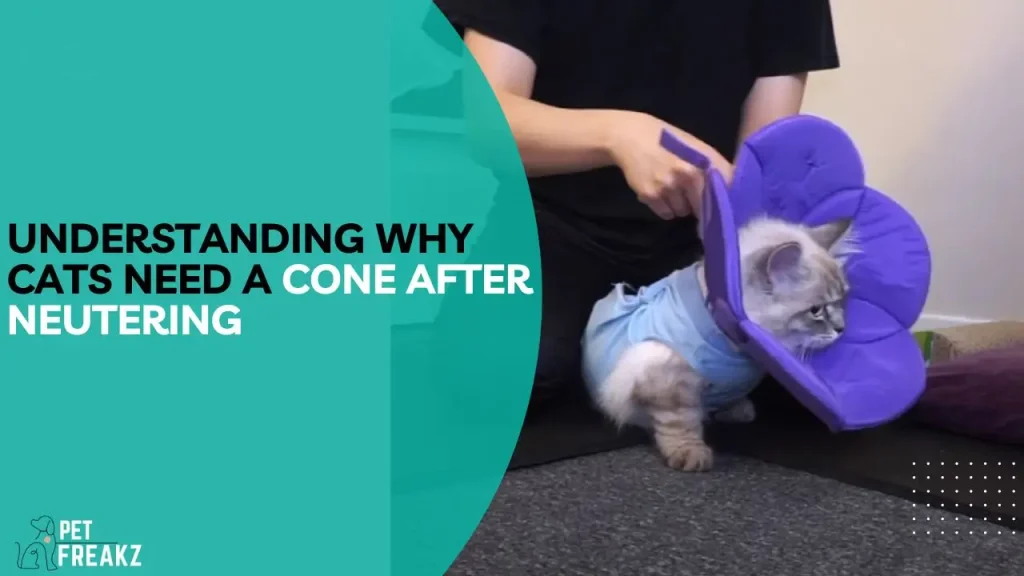
The Elizabethan collar serves multiple purposes in the post-neutering period. Firstly, it prevents self-inflicted wounds by discouraging cats from licking or biting their surgical site. It is also recommended for dogs after neutering.
Additionally, it acts as a protective barrier, shielding the surgical site from contamination and reducing the risk of infection.
Lastly, it assists in proper healing by preventing excessive movement or interference with the stitches.
Does my cat need to wear a cone after neutering?
Immediately after your cat’s neutering procedure, it is essential to ensure cone usage. This is the time when cats are most likely to attempt to lick or scratch their surgical site, increasing the chances of complications.
Veterinary professionals universally recommend that your cat need to wear a cone after neutering.
How long to keep the cone on the cat after neuter?
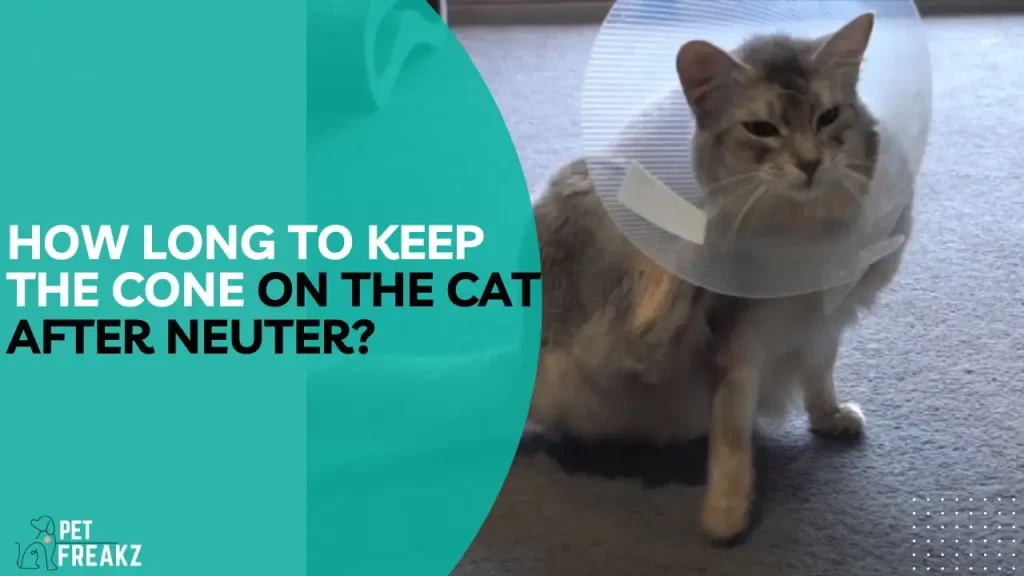
One of the most common questions cat owners have is, “How long to keep the cone on the cat after neuter?” The duration of cone usage depends on various factors, including the cat’s behaviour, healing progress, and the veterinarian’s recommendation.
On average, cats are required to wear the cone for about 10-14 days after neutering. However, every cat is different, and some may require a longer or shorter period of time. It is essential to follow your veterinarian’s instructions and closely monitor your cat’s behaviour and healing process to determine the appropriate duration.
Can I take my cat’s cone off after 7 days?
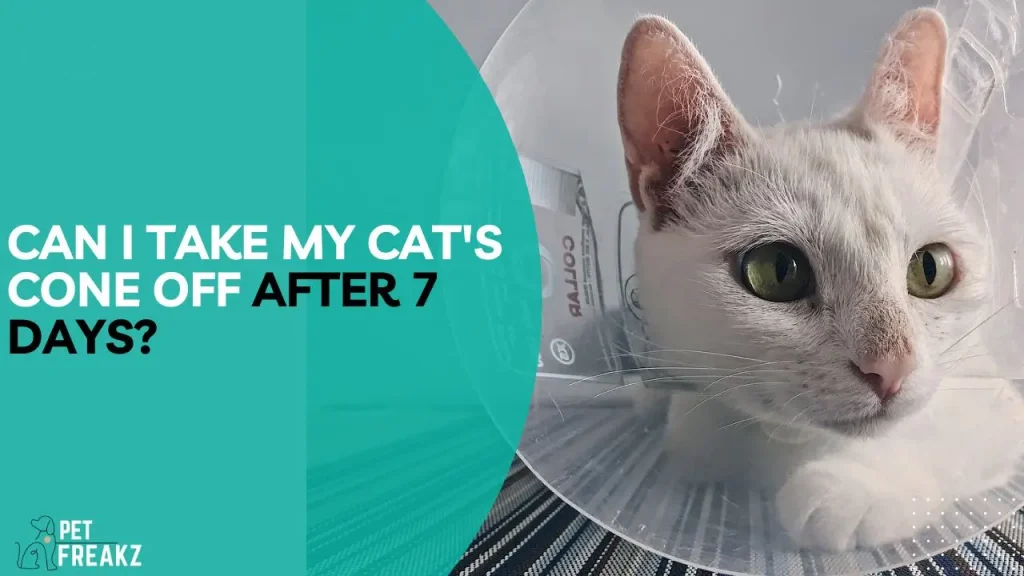
The duration for wearing a cat’s cone can vary, but it’s generally recommended to keep it on for about 7-14 days.
After 7 days, it’s advisable to consult your veterinarian to assess your cat’s progress and determine whether it is safe to remove the cone. They will be able to evaluate the healing process and provide appropriate guidance.
Factors to consider in determining the right time to remove the cone
Removing the cone too early can be risky, as it may result in your cat interfering with the surgical site and causing complications. On the other hand, keeping the cone on for too long can cause distress and discomfort to your cat. To determine the right time for cone removal, consider the following factors:
- Healing progress: Monitor the incision site closely. If it appears to be healing well, with no signs of redness, swelling, or discharge, it may be an indication that your cat is ready to have the cone removed.
- Behaviour: Observe your cat’s behaviour while wearing the cone. If it seems relaxed, is eating and drinking normally, and not excessively trying to remove or scratch the cone, it may be a sign that your cat is becoming accustomed to it and is ready for cone-free days.
- Veterinarian’s advice: Consult with your veterinarian regarding the progress of your cat’s healing. They may want to examine the surgical site and provide their professional opinion on when it is safe to remove the cone.
- Less sensitivity around the incision: If your cat allows you to gently touch or inspect the surgical site without any signs of discomfort or pain, it may suggest that the cone can be removed.
Tips for ensuring your cat’s comfort while wearing the cone
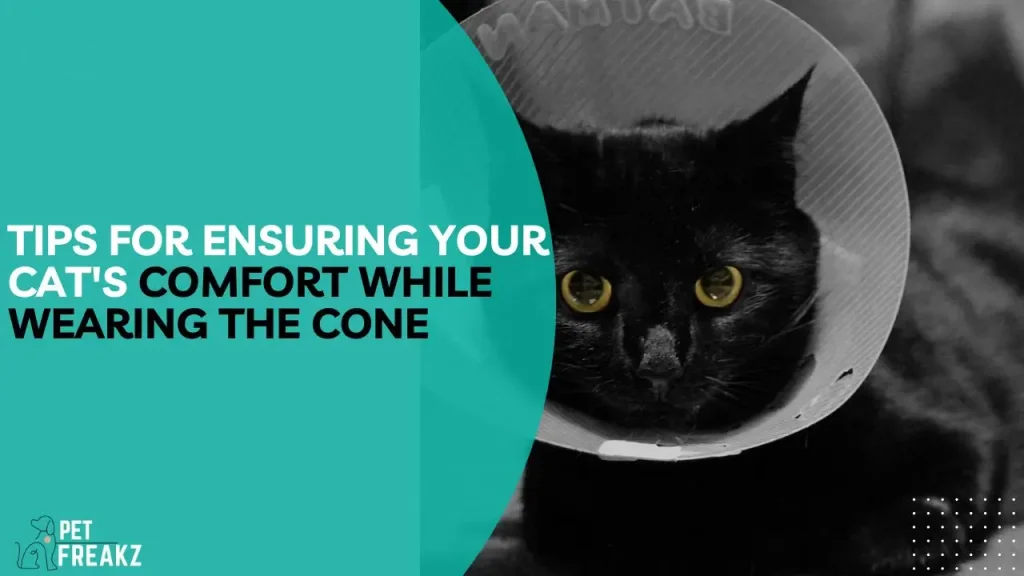
Wearing a cone can be uncomfortable and distressing for cats. As pet owners, It is our responsibility to ensure their well-being and minimize any suffering they may experience during this time. Here are some tips to help your cat feel more comfortable while wearing the cone:
- Adjust the cone’s fit: Ensure that the cone is not too tight or too loose. It should be snug enough to prevent your cat from reaching the surgical site but loose enough for them to breathe and move comfortably.
- Provide a quiet and calm environment: Cats may feel anxious or stressed when wearing the cone. Create a peaceful environment by minimizing loud noises and providing a cozy and familiar space for your cat to rest.
- Engage in interactive play: To distract your cat from the cone, engage in interactive play sessions using toys or puzzles. Mental stimulation and physical activity can help alleviate boredom and stress.
When can my male cat go outside after being neutered?
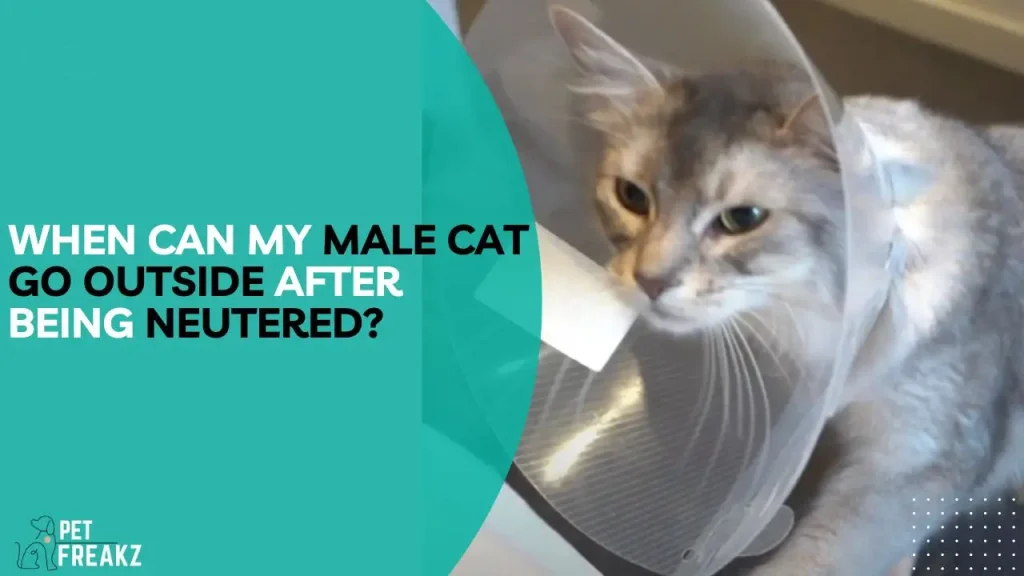
After neutering, male cats need time to recover and heal. It is generally recommended to keep them indoors for at least a week after the surgery. The incision site needs to heal properly, and allowing your male cat to go outside too soon can increase the risk of infection or injury. Consult with your veterinarian for specific guidelines based on your cat’s individual needs and the healing progress.
Female cat neutering aftercare: additional considerations
Neutering female cats also require specific aftercare considerations. While the cone is important in preventing the cat from interfering with the surgical site, you may need to pay additional attention to certain factors.
Female cats may experience post-surgical swelling and discharge, which can be managed by keeping the surgical area clean and dry. Consult with your veterinarian for specific instructions on how to care for your female cat after neutering.
What to do If Vet didn’t give a cone after neutering the cat?
In some cases, your veterinarian may not provide a cone after your cat’s neutering surgery. If this happens, it is essential to take proactive measures to prevent your cat from licking or biting the surgical site.
There are alternative options available, such as inflatable collars or soft fabric cones, that can serve the same purpose. Additionally, closely monitor your cat’s behaviour and consider using deterrent sprays or bitter-tasting products to discourage them from grooming the surgical area.
Conclusion
Ensuring your cat’s comfort after neutering is crucial for their well-being and speedy recovery. The cone plays a vital role in preventing your cat from interfering with the surgical site. Remember to closely monitor your cat’s behaviour, healing progress, and consult with your veterinarian to determine the right time to remove the cone. By providing the necessary care and attention during the post-neutering period, you are contributing to your cat’s overall health and happiness.
Frequently Asked Questions
Do male cats need a cone after neutering?
Yes, they require a cone after neutering. But In some cases, male cats do not require a cone after neutering. However, it’s best to consult your veterinarian for specific instructions based on your cat’s individual needs and behaviour.
Can I remove the cone if my cat seems fine?
While your cat may appear fine, it is important to consult with your veterinarian before removing the cone. They will assess the cat’s healing process and guide you on the appropriate time for removal.
How long does the average cat need to wear the cone?
The average cat typically requires 7 to 14 days of cone usage after neutering. However, this can vary depending on individual factors and the complexity of the surgical procedure.
Can I use alternative methods instead of the cone?
Yes, there are alternative methods available, such as inflatable collars or fabric cones, that can provide a more comfortable experience for the cat while still preventing interference with the surgical site. Consult your veterinarian to discover the best solution for you.
What complications should I watch out for after neutering?
It is essential to monitor the surgical site for any signs of infection, including redness, swelling, or discharge. Additionally, if your cat exhibits signs of pain or discomfort, it is crucial to seek veterinary attention promptly.





